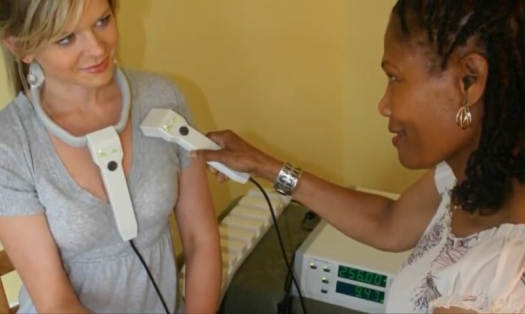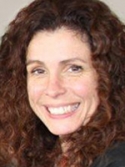OndamedDemo.jpg

A4MPresents
ONDAMED device demonstration. The Vascular Autonomic Signal (VAS) is a physiological response of the neurovascular system of the body to information being brought into its energy field. This response can be manually felt as a pulse change on the wall of the radial artery.
August 2, 2023
Dear Colleagues and dear friends,
I hope you and your loved ones are well.
It’s time for us to review the unique method that we teach practitioners to use in combination with the ONDAMED device. We defined this method as biofeedback based on the biology’s feedback or response to an external stimulus, in our case focused, low-pulsed electromagnetic fields. The U.S. FDA regulates biofeedback devices under Sec. 882.5050 as Class II Medical Device, Category Neurology indicated for relaxation training and muscle reeducation, or in a more modern term, indicated for “stress and stress related disorders”.
Ondamed Inc., located in Washingtonville, NY, has been FDA-regulated for 20 years with successful annual FDA audits. Healthcare coverage is available for biofeedback services rendered in the USA (codes available upon request). Biofeedback has received increasing attention from the scientific community and the public over the past few years due to the rise of the mental health crisis in the U.S. and beyond.
The original term “Vascular Autonomic Signal” (VAS) was coined by Dr. Paul Nogier, a French Neurologist who scientifically explored, practiced, and documented Auriculotherapy (Ear Acupuncture) back in the 1950s.
While the ONDAMED Technology is a therapy in and of itself, the combination with biofeedback allows it to become a personalized therapeutic intervention. This was the inventor’s vision when he developed the ONDAMED technology in 1993. Rolf Binder’s ingenious idea 30 years ago to personalize therapeutic intervention for each individual using his technology combined with the VAS biofeedback method should reveal the patient’s biological feedback to ONDAMED’s stimulus to find:
- The most significant therapeutic frequencies for the patient.
- Potential stressed areas in the body in terms of deviating from homeostatic conditions to allow targeted treatment by placing ONDAMED applicators on the identified areas.
The biofeedback method propels ONDAMED to an intelligent and personalized approach. Bio-hacking our biology, which encompasses our innate and intelligent wisdom, short-cuts access to viable hidden emotional information that would otherwise not be available, so that one can intervene purposefully with quick and significant therapeutic results.
How difficult is it to learn the biofeedback method?
Once the biofeedback skill has been learned, practiced, and mastered over time, it becomes an invaluable tool for a large and diverse range of practitioners. The biofeedback method is carried out by palpating the radial pulse on either side of the patient’s wrist. Other areas may be accessed for pulse reactions including the carotid or temporal arteries. The practitioner places the index and middle fingers—or according to Nogier’s original instruction, the tip of the thumb – on the patient’s inside of the wrist. Nogier considered the tip of the thumb to be the most sensitive physiological area (besides the tip of the tongue) in which one does not feel one’s own pulse, which may prove disturbing when observing the patient’s pulse reactions.
While the neck applicator emits a large variety of subtle electromagnetic fields and interrogates the patient’s biology primarily via the central nervous system, the practitioner awaits a reaction from the patient’s pulse to ONDAMED’s incoming stimulus. The pulse reaction is felt as an increase or decrease of the pulse’s amplitude, strength, or intensity. This reaction is considered to be a trigger effect that stems from the autonomic nervous system and not directly from the cardiovascular system. The autonomic nervous system serves a highly interesting gateway to possibly part of our conscious and subconscious, hence giving access to information retrieved with the patient’s pulse reaction/vascular autonomic signal, which would otherwise be difficult to access. Other possible forms of accessing the autonomic nervous system include meditation or hypnosis.
This method must NOT be confused with TCM or Ayurvedic pulse testing. They are completely different testing methods.
Biofeedback is quickly learned, often by virtual training within 5 to 15 minutes followed by practicing the newly acquired skill to strengthen the practitioner’s confidence.
It is often stated by new ONDAMED practitioners that at first, the biofeedback method may seem subtle and challenging, but over time it becomes one of their most valuable clinical skills—a skill that connects practitioners with the patient by physically touching them and enabling practitioners to experience clinical observation from a different perspective, which is free of judgement while combining their own innate and intelligent wisdom. It is a method of embracing one’s trust, experience, and confidence in a further developed self beyond self.
How to Experience the Vascular Autonomic Signal
The VAS is an arterial reaction which is felt in the muscular tone of the (arterial) wall. It is not a matter of cardiac rhythm, which remains unchanged. The VAS manifests itself in the following ways:
The pulse may become fuller, stronger.
The pulse may become weaker, fainter.
The VAS response is immediate, as rapid as the pupillary reaction when the eye is exposed to a flash of light. It may last for one, two, or most often three beats; more than 3 beats usually indicate a pathological condition.
The best way to learn this phenomenon is to build up experience by trying to sense the VAS in all of one’s patients.
Gerhard Litscher, Theodoros Yannacopoulos, and Peter Kreisl write in "Nogier Reflex: Physiological and Experimental Results in Auricular Medicine–A New Hypothesis":
“The two investigators (T.Y. and P.K.) assume that RAC* cannot be interpreted in the sense of a cardiac ANS response with the triggering of a pulse wave. Rather, their hypothesis defines RAC as a purely electrophysiological phenomenon in the sense of a cerebral response and transmission. The purpose of the present small series of measurements is to show that the VAS signal is additive to the RR reaction wave as an electrical signal.”
“According to T.Y. and P.K., the decisive momentum for VAS, however, is the fact that the perceived VAS ultimately does not describe a cardiac response of the ANS, as described previously [7]. Rather, the thermodynamic approach shows that the mechanical pulse of the myelin sheath, triggered by the action potential, is superimposed on the actual cardiac pulse wave.”
*I replaced “RAC” (reflex auriculo-cardiac) with the synonym “VAS”
Read the finishing brilliant excerpt of "Toward an Integral Energy Medicine Model for Understanding the Vascular Autonomic Signal":
“The VAS seems to be a summarized response of the whole human system to any change of information, whether the stimulus has originated externally or internally to the system, and whether it is touching the body or not. A model for understanding this phenomenon that is inclusive enough to contain all aspects of the change process has yet to be defined. That the VAS is a neurobiochemical response of the body to a stimulus is part of the answer, which does not address the subtle information transfer processes involved. The VAS allows us to "listen" to the communication occurring within the body, and between the physical body and the more subtle energy bodies surrounding it.
As Bill Tiller suggests in Science and Human Transformation, homeostasis is maintained through an ongoing information transfer between frequencies of consciousness, energy and matter. To include all factors of this "dynamic equation of nature" is to form an Integral Energy Medicine model, taking into account the effects of all aspects of our nature: physiology, electromagnetic energy, subtle energy and consciousness. Not to include all factors is to ignore data and limit understanding. Although subtle energy and consciousness are not validated within the accepted scientific-medical model, the effects of energy, and of focused consciousness, on the human system have been well documented-measurements of the impact of emotions on brain responses and perceptions, effects of electromagnetic pollution, photography of variations in light around a body, hypnosis' effects on physiology, and the ability of biofeedback to control autonomic responses as some examples. To study the phenomenon of the VAS, as a subtle energetic diagnostic tool, fully necessitates exploring the domains of information transfer occurring amongst all levels of consciousness, energy and matter. Such a conceptualization of the communication that results in a practitioner feeling the change in the pulse that is the VAS offers an opportunity to reflect the whole wonder of the VAS and the human system that it reflects.” (p. 4)
I hope you enjoy this piece. You may wish to re-read it a few times in order for the profoundness of the information to gradually get digested, assimilated, and used creatively.
Any questions or comments are always welcome.
Be well, mindful, and filled with joy.
Yours in gratitude,
Silvia Binder, N.D., Ph.D.
Founder of The Binder Institute for Personalized Medicine
References
Nogier, Raphael. Auriculotherapy. Georg Thieme Verlag KG, 2009. Book DOI: 10.1055/b-002-66246
Quah-Smith I. Auricular Interventions in Neurology: the Vascular Autonomic Signal Challenge. OBM Integrative and Complementary Medicine 2018;3(2):012; doi:10.21926/obm.icm.1802012.
Litscher G, Yannacopoulos T, Kreisl P. Nogier Reflex: Physiological and Experimental Results in Auricular Medicine - A New Hypothesis. Medicines (Basel). 2018;5(4):132. Published 2018 Dec 12. doi:10.3390/medicines5040132
Muriel Agnes & Bob Nunley, Ph.D. Toward an Integral Energy Medicine Model for Understanding the Vascular Autonomic Signal. Published Nov 30, 2012, Simon Fraser University, Burnaby, British Columbia.


